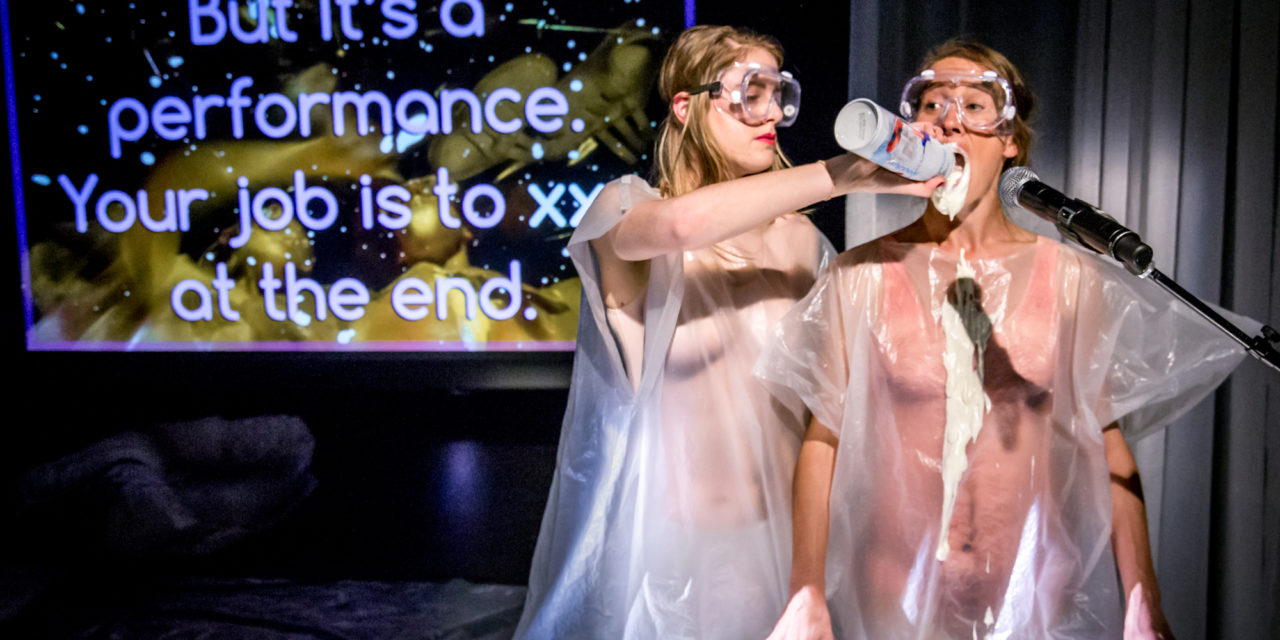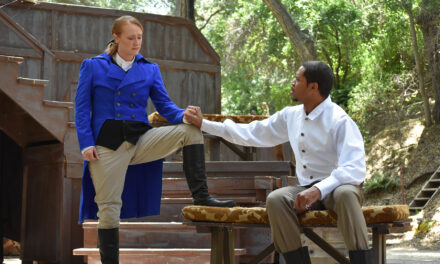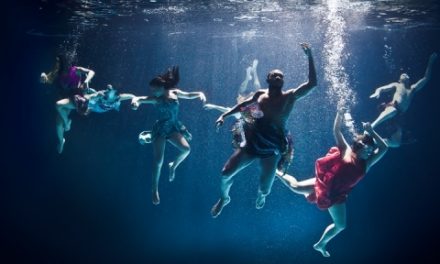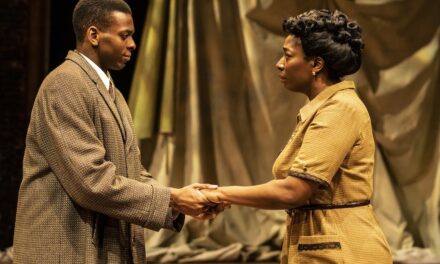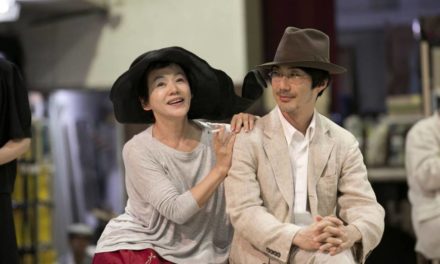Merriam-Webster has recently named “feminism” as the 2017 “word of the year” and feminist issues and dramaturgy are central to Body Double, the 2017 STAB commission at Wellington’s BATS Theatre. Body Double boldly integrates its theme of female desire with a riotous and playful combination of multi-media and physical theatre. Since 1995 STAB has been an annual institution at BATS, an invitation to practitioners to dream, to experiment, to invent, to risk. The commission comes with a substantial budget, so the pitching process inspires cash-starved theatre-makers to out-bid each other with proposals that push the imaginative possibilities of live performance. I’ve seen almost every STAB work (and directed one in 2008), so I take a keen interest in whether or not each work genuinely pushes the boundaries. Among many other experiences, I’ve crawled through a site-specific surrealist underworld, participated in an interactive re-staging of an influenza pandemic, observed projections on a giant head, and re-lived the near-disastrous Apollo 13 moon voyage. But I cannot recall any STAB commission that was so explicitly feminist in form and content as Body Double. Emma Willis recently published an excellent article on the legacy of STAB, observing that there’s a “delicate balance” between “providing a space for risk” and the funders’ expectation that the work will be “both artistically and commercially successful.” (“’A Rare Opportunity to Fail’: STAB’s Legacy of Theatrical Experimentation,” Australasian Drama Studies 70 (April 2017), 86-112.) Body Double has successfully delivered on all fronts, becoming the first STAB commission to be programmed by the Auckland Arts Festival before it even opened at BATS, and winning Production of the Year at the 2017 Wellington Theatre Awards.
Body Double director and co-writer Eleanor Bishop is one of New Zealand’s most daring, intelligent, and political directors. After co-directing the award-winning theatre company The PlayGround Collective, she won a Fulbright fellowship to study in the U.S.A. where she completed an MFA in Directing at Carnegie Mellon in 2016 and created Steubenville (2015), which examined rape culture in the U.S. Earlier this year she collaborated with performance artist/actor Julia Croft on Boys, a feminist deconstruction of the iconic New Zealand classic Foreskin’s Lament (1980) for the Auckland Theatre Company. Croft is also a key collaborator on Body Double and one of its two performers, with Karin McCracken, an actor who has previously worked as a lawyer and a sexual abuse educator.
Wellington has an honorable herstory of feminist theatre. In the 1980s the term “actress” was trashed, the women’s caucus of Actors’ Equity was formed (1984) to contest the inherent sexism in theatre and television, the all-female cabaret Hen’s Teeth was founded (1988) to develop women’s comedy, Jean Betts wrote hilarious feminist deconstructions of A Midsummer Night’s Dream and Hamlet (1983 and 1993), the WOPPA festival celebrated a century of women’s suffrage (1993), and the Magdalena Project staged their international women’s theatre festival in Wellington (1999). The 21st century has seen a younger generation questioning patriarchal attitudes through devised shows like Minge (2010) where 12 female theatre-makers (including Eleanor Bishop) produced a combination of cabaret and monologues foregrounding women’s experiences. Yet despite all of this art and activism, the perception of male dominance remains. Reacting to the news that female nominees are in the majority for the 2017 Wellington Theatre Awards, director Stella Reid commented that the increase in female directors signalled “female roles that are more complex and full-rounded,” “that aren’t going to be seen through a male gaze” and “aren’t two-dimensional ‘tits on legs’ kind of thing.” The male gaze in literature and cinema comes under intense scrutiny in Body Double, which is an experience rather than a narrative.
For Wellington audiences, Body Double is a rare example of highly-resourced, internationally-networked postdramatic theatre. The show was developed through five workshops in Pittsburgh and Auckland and an intensive month at BATS working–Wooster Group-style–with all of the technology in the space. U.S.-based designers Lucy Pope (set and costume) and Kevin Ramser (media design) collaborated with Bishop and local designers Marcus McShane (lighting) and Te Aihe Butler (sound). The care and precision that comes from the integrated devising process shows in the technical quality and complexity of the work.
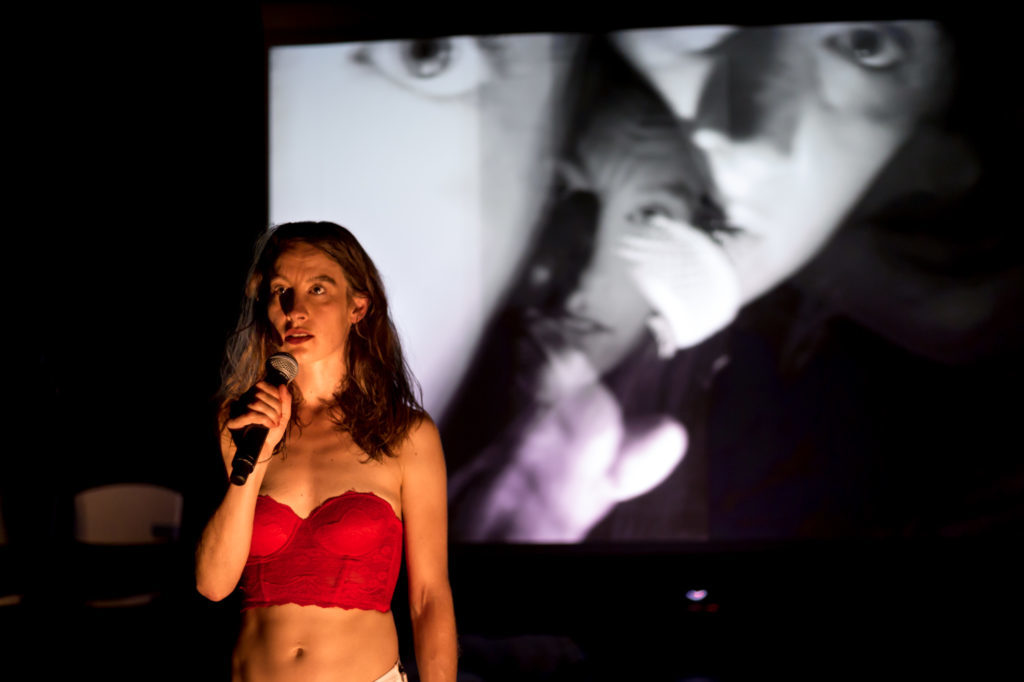
Julia Croft in Body Double, directed by Eleanor Bishop, BATS Theatre, Wellington (2017), photo credit Tabitha Arthur
Croft and McCracken present as themselves, not characters, watching the audience as we come in, setting up the stage in front of us, chatting to us about each other and their relationships, calling instructions to the lighting operator. Pope’s all-white set is layered and transformative, with a gauze curtain diagonally intersecting the space, a vivid white fur throw, a luxurious inflatable lounge chair, a screen upstage, a clinical-looking glass table. This, along with the plastic sheet covering the stage suggests that it’s going to get messy later on. Simultaneous actions dominate, mediated by microphones, handycams, multiple screens, and projections.
The performers tell us the show is about female desire, introduce a few academic concepts such as the “female subjectivity of the divided self.” Their tone is playful, slightly unsettling, sometimes reverbed or distorted through the mikes, as it veers between light parody and hard-hitting narratives. They launch into a concert-level rendition of Carly Simon’s You’re So Vain. Here, as in later monologues, the use of “you” and the actors’ deep eye contact with the audience directly implicates, challenges, and involves us. McCracken scans the audience stating matter-of-factly, “I know every single person that lives in this city.”
McCracken reads Tolstoy’s Anna Karenina while a projected fire flickers on the upstage screen. Croft re-enacts the affair between Anna and Count Vronsky with a handycam and a stick-on mustache. This parody of Russian romance foregrounds the formative role literature plays in developing gendered perceptions of love and sexual attraction. Frequent juxtapositions of ironic and abstracted images avoid any sense that the show may become too serious for its own good. Anna Karenina reads Roland Barthes. Words, images, and bodies interweave and overlap in a sophisticated exploration of the exhilarating and contradictory elements of desire–intrigue, dark play, vanity, lust, ecstasy, anger, debasement, destruction, embarrassment, regret. We witness an excess of cinematic images of female desire and pleasure while the live performers simulate in parody or in empathy with those women on the screen. The text is deliciously challenging as the performers survey the audience and state, “I practice my gaze.” The emphasis on the body increases as the show progresses, with live projections distorting hands, faces, lips. Hair smearing cream over the glass-topped table filmed by a camera below produces gloriously colorful abstracts on the screen accompanied by a distorted music and sound. The power imbalances and politics of sexual encounter shift to more disturbing and uneasy associations. Croft and McCracken are perfect partners in pastiche, with equally powerful stage presence yet ironically illustrating the female “divided self” through their collisions and contrasts. Delivering monologues directed at various sexual partners, they reveal the subtext and psychology of desire, becoming increasingly more intimate in the details as the show builds to a gloriously excessive climax. Finally, the lights slowly fade out on an image of female connectivity as the two women converse, laugh, eat chicken, and drink red wine.
The current wave of celebrity sexual abuse revelations and the #MeToo campaign make Body Double more than timely. Although we are told “we cannot re-write the great Russian novels,” Leo Tolstoy’s self-appointed authority to represent female desire is thoroughly trashed and the linearity of his classic narrative replaced by ironic multiple expressions of desire with layers of possible meanings. Body Double displaces the dominance of the male gaze, puts women in control and probes the contradictory impulses and consequences of female desire. This is a highly ambitious work which many practitioners are still talking about and debating weeks after it premiered. Through a sophisticated layering of imagery and ideas, Bishop and her collaborators have created an ideal STAB project, one that will travel further and presents new possibilities for challenging postdramatic performance in New Zealand.
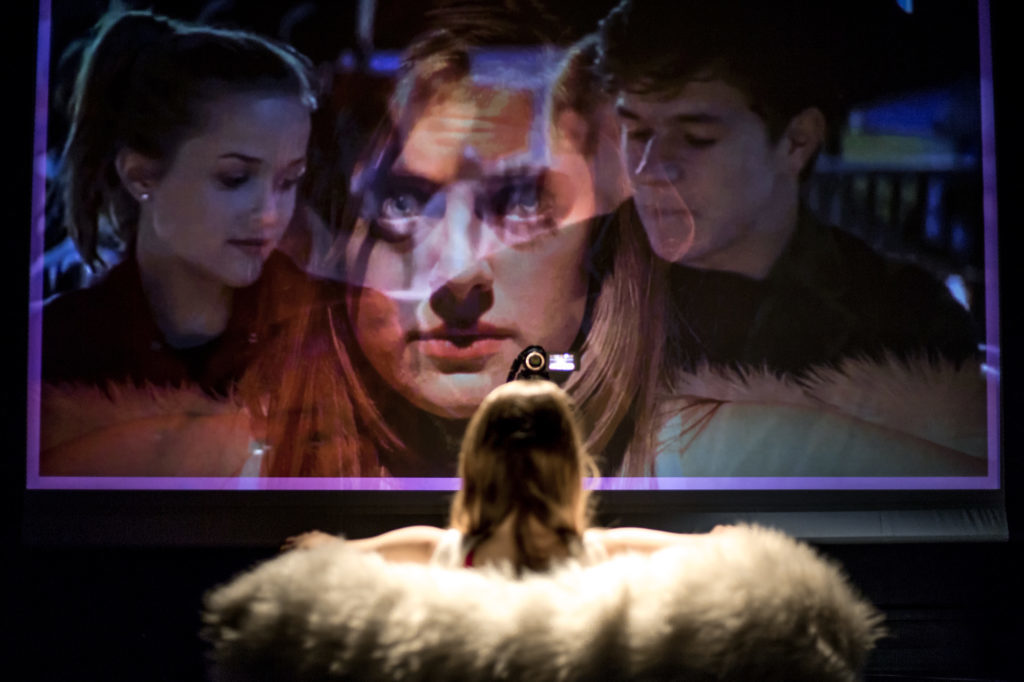
Karin McCracken in Body Double, directed by Eleanor Bishop, BATS Theatre, Wellington (2017), photo credit Tabitha Arthur
This post was written by the author in their personal capacity.The opinions expressed in this article are the author’s own and do not reflect the view of The Theatre Times, their staff or collaborators.
This post was written by David O'Donnell.
The views expressed here belong to the author and do not necessarily reflect our views and opinions.

